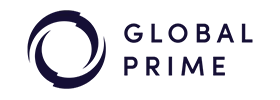Micro forex accounts have become increasingly popular among traders, especially beginners. This type of account gives them the opportunity to enter the market with a minimal capital investment, allowing them to open smaller positions and reduce the likelihood of experiencing significant losses.
Below you can find a list with Forex brokers where you can open a micro account:
Top 7 Forex Brokers with micro account
-
Fusion Markets
- Australia regulated broker
- MT4, MT5, TradingView, Ctrader
- Leverage up to 500
Trading InstrumentsDeposit Methods- Commodities CFDs
- Crypto CFDs
- Forex CFDs
- Indices CFDs
- Metals CFDs
- Stock CFDs
-
FP Markets
- Australia and CySEC regulated broker
- MT4/MT5, TradingView, Ctrader, Iress
- EUR/USD spread from 0.0 pips
Trading InstrumentsDeposit Methods- Commodities CFDs
- Crypto CFDs
- Energy CFDs
- Forex CFDs
- Indices CFDs
- Metals CFDs
- Stock CFDs
-
ActivTrades
- Winner of 20+ Global Awards
- MT4/MT5, TradingView
- Leverage up to 1:400
Trading InstrumentsDeposit Methods- Bonds CFDs
- Commodities CFDs
- Crypto CFDs
- ETF CFDs
- Forex CFDs
- Indices CFDs
- Share CFDs
-
Axi
- Raw spreads start from 0.0 pips
- Offers order execution faster than standard ECN model
- Axi Select Funded Trader Program offers funding up to $1 million
Trading InstrumentsDeposit Methods- Commodities CFDs
- Crypto CFDs
- Forex CFDs
- Indices CFDs
- Metals CFDs
- Stock CFDs
-
Pepperstone
- Australia and CySEC regulated broker
- MT4/MT5, TradingView, Ctrader, Iress
- EUR/USD spread from 0.0 pips
Trading InstrumentsDeposit Methods- Commodities CFDs
- Crypto CFDs
- Energy CFDs
- Forex CFDs
- Indices CFDs
- Metals CFDs
- Stock CFDs
-
Tickmill
- Classic and Raw accounts available to suit various trading needs and requirements.
- Popular trading platforms, such as MT4 and MT5.
- Regulated by reputable authorities: ASIC and CySEC.
Trading InstrumentsDeposit Methods- Bonds CFDs
- Commodities CFDs
- Crypto CFDs
- Forex CFDs
- Indices CFDs
- Stock CFDs
-
Global Prime
- Australia regulated broker
- Advanced MT4
- $0 Minimum Account Size
Trading InstrumentsDeposit Methods- Commodities CFDs
- Forex CFDs
- Indices CFDs
- Metals CFDs
Brokers Compared by Spread
FX Brokers Deposit Method Comparison
| Brand | Minimum deposit | |
|---|---|---|
| Fusion Markets | $0 | |
| FP Markets | $50 (AU$100) | |
| ActivTrades | $0 | |
| Axi | $0 | |
| Pepperstone | $0 | |
| Tickmill | $100 | |
| Global Prime | $0 |
Brokers by Regulator
| Brand | Maximum leverage | |
|---|---|---|
| Fusion Markets | 1:500 (ASIC | Pro Account), 1:30 (ASIC | Retail Account), 1:500 (VFSC | Retail Account) | |
| FP Markets | 1:500 (CySEC | Pro Account), 1:30 (ASIC | Retail Account), 1:30 (CySEC | Retail Account), 1:500 (FSAS | Retail Account) | |
| ActivTrades | 1:400 (CMVM | Pro Account), 1:30 (CMVM | Retail Account), 1:1000 (FSC), 1:200 (SCB) | |
| Axi | 1:500 (Elite Account), 1:400 (Pro Account), 1:30 (ASIC | Retail Account), 1:30 (CySEC | Retail Account), 1:30 (DFSA | Retail Account), 1:30 (FCA | Retail Account), 1:500 (SVGFSA) | |
| Pepperstone | 1:500 (CySEC | Pro Account), 1:500 (SCB | Pro Account), 1:30 (ASIC | Retail Account), 1:30 (CySEC | Retail Account), 1:30 (DFSA | Retail Account), 1:30 (FCA | Retail Account), 1:200 (SCB | Retail Account) | |
| Tickmill | 1:500 (CySEC | Pro Account), 1:500 (FCA | Pro Account), 1:30 (CySEC | Retail Account), 1:30 (FCA | Retail Account), 1:1000 (FSAS) | |
| Global Prime | 1:500 (ASIC | Pro Account), 1:30 (ASIC | Retail Account), 1:500 (VFSC) |
Forex Brokers Platform Availability
| Brand | FX pairs to trade | |
|---|---|---|
| Fusion Markets | cTrader, MetaTrader 4, MetaTrader 5, TradingView | |
| FP Markets | cTrader, TradingView | |
| ActivTrades | MetaTrader 4, MetaTrader 5, Proprietary Web, TradingView | |
| Axi | MetaTrader 4 | |
| Pepperstone | MetaTrader 4, MetaTrader 5, Proprietary Mobile, Proprietary Web | |
| Tickmill | MetaTrader 4, MetaTrader 5, Proprietary Mobile, Proprietary Web | |
| Global Prime | MetaTrader 4 |
Comprehensive Comparison of the best micro account brokers
With micro accounts, traders can gain hands-on experience in the forex market, test new strategies, and refine their skills even when having a limited budget at their disposal. In this article, we will delve deeper into micro forex accounts and how they work, exploring their features, benefits, and drawbacks, as well as providing guidance on how to register and use them more efficiently.
What Is a Micro Forex Account and How Does It Work?
A micro forex account allows you to open smaller positions, typically 1,000 units of the base currency. This account type is designed for people who want to trade with smaller initial capital, allowing them to start with $1,000 or less. It works similarly to standard forex accounts, but trades are measured in “micro” rather than “standard” lots.
Micro accounts allow you to trade various currency pairs, commodities, and other financial instruments, giving you access to a range of trading tools and platforms, including MetaTrader and cTrader. Micro accounts are often used by beginners, scalpers, and strategy testers, as they provide a low-risk environment for building experience and trying out new strategies.
Example of Trading EUR/USD with a Micro Account
To illustrate how these accounts work, let’s consider a concrete example of a micro trade in the EUR/USD pair via a contract for difference (CFD). Suppose a trader wants to buy 1,000 units of EUR/USD, which corresponds to one micro lot. The current market price is 1.1000, and the trader expects it to rise to 1.1050. They open a buy position equal to 1,000 units, and their order is executed at the current market price of 1.1000.
Trade Details:
- Currency pair: EUR/USD
- Micro lot size: 1,000 units
- Entry price: 1.1000
- Take-profit price: 1.1060
- Stop-loss price: 1.0960
- Leverage: 1:100 (for every $1 in the account, the trader can control $100 in the market)
In this particular example, the trader is essentially buying 1,000 units of euro at the current market price of 1.1000. The trade is executed, and the trader’s account is updated to reflect the new position. If the euro appreciates against the dollar and its price rises to 1.1060, the trader can close the position and collect a profit of $6 (1,000 units x 0.0060). If the price falls to 1.0960, this will trigger the stop-loss and the position will automatically close, resulting in a loss of $4 (1,000 units x 0.0040).
Distinctive Features of Micro Forex Accounts
Micro forex accounts have gained popularity among traders due to their unique characteristics that render them suitable for people with a low risk tolerance and limited budget. By better understanding their distinctive features, traders can make informed decisions about whether this type of account is right for them.
- Smaller lot sizes: Micro accounts typically work with lots equalling 1,000 units, which is smaller than the standard lot size of 100,000 units. Opening smaller positions minimizes your risk of experiencing considerable losses.
- Lower leverage: This type of account often gives you access to lower leverage ratios. While leverage can be a potentially useful tool as it allows you to gain a greater market exposure, it also increases your exposure to risk. Trading in micro lots enables you to calculate and manage your risk more accurately.
- Narrower spreads: Micro accounts are usually associated with narrower spreads, which can result in lower trading costs overall. Spreads are the difference between the bid and ask prices of a currency pair. The narrower they are, the better for the trader.
- Low minimum deposit: Micro accounts typically require lower minimum deposits, making them accessible to traders with limited budgets. This allows them to start with an amount they feel comfortable with and gradually increase their investment as they gain experience and confidence.
How to Register a Micro Forex Account
Registering a micro forex account is a straightforward process that can be completed within no more than half an hour, allowing you to quickly and easily start trading with a reputable broker. The registration typically involves providing personal and financial information, verifying the account, and depositing funds. Here are the steps you need to go through.
- Research and choose a reputable forex broker by checking its reputation, regulatory status, customer feedback, and trading conditions, among other aspects.
- Visit the broker’s website and click on the “Open Account” button to initiate the registration process.
- Fill out the registration form with personal and financial information, including your first and last name, email, phone number, address, birthdate, and payment details.
- Verify the account by uploading the documents requested by the broker. These include copies or photos of a personal identification document, unity bills, and payment method.
- Deposit funds into the account using a payment method accepted by the broker. The most commonly available options are card, bank transfers, online banking, and e-wallets.
- Connect your micro account to MetaTrader, cTrader, or whichever platform the broker works with.
- You can now start trading with your new micro forex account.
Other Common Account Sizes in Forex Trading
In addition to micro accounts, there are several other common account sizes in forex trading, including standard, mini, and nano accounts. Your choice should be governed by multiple factors, including your level of experience, risk tolerance, budget, trade frequency, and investment goals.
Different account sizes come with varying trading conditions, which can significantly impact your overall experience. Furthermore, understanding the differences between them helps traders make informed decisions about which type of account is best suited to their individual needs and circumstances.
- Standard account: This account type typically requires a minimum deposit of $1,000 – $10,000 and offers standard lot sizes of 100,000 units in the base currency.
- Mini account: Mini accounts require a minimum deposit of around $100 and offer mini lot sizes of 10,000 units.
- Nano account: Nano accounts are the smallest account type, requiring a minimum deposit of $10 to $100 and offering lot sizes equal to 100 units.
| Lot Size | Units | Pip Value in US$ |
|---|---|---|
| Standard Lot | 100,000 | $10 |
| Mini Lot | 10,000 | $1 |
| Micro Lot | 1,000 | $0.10 |
| Nano Lot | 100 | $0.01 |
Benefits of Opening a Micro Forex Account
Opening a micro forex account offers numerous advantages for traders. It provides a low-risk environment to test trading strategies and refine your skills. Micro accounts also facilitate trading with smaller amounts, which makes them accessible to a wider range of traders. Below, we list all benefits of using this type of forex account.
- Lower capital requirements: Micro accounts require minimal capital investment, making them accessible to traders with limited funds.
- Lower risk exposure: Trading in micro lots reduces the risk of suffering crippling losses as trading occurs in smaller lots.
- Tighter spreads: This account type often has narrower spreads, resulting in lower trading costs, especially if you engage in high frequency trading like scalpers do.
- Practicing in a real trading environment: Micro accounts allow you to practice trading in a real environment with minimal risk.
- Improved trading skills: They enable traders to develop and refine their trading skills without risking significant amounts.
- Testing new strategies: Micro accounts provide a low-risk environment for testing new trading strategies and refining existing ones.
- Flexibility: Micro accounts offer flexibility, allowing their users to trade with smaller positions and adjust their strategy as needed.
Drawbacks of Trading with a Micro Forex Account
Trading in micro lots has its limitations. Despite the benefits, this type of account is obviously unsuitable for people looking to trade with larger amounts of capital. Additionally, the smaller trade sizes can result in lower profits, making it challenging for traders to achieve their financial goals. You should carefully consider these factors before opening a micro Forex account.
- Reduced profitability: Micro accounts are often less profitable due to their smaller lot size.
- Higher transaction costs: Traders using this account type may incur higher transaction costs resulting from the increased trade frequency.
- Limited trading opportunities: This type of account may negatively impact your trading opportunities due to smaller position sizes.
- Over-trading: Over-trading can prove to be an issue as some people may feel more comfortable taking smaller positions, which can result in higher trading costs.
- Lower leverage: Micro accounts often have lower leverage, which can limit your market exposure and potential for generating considerable profits.
- Limited access to certain markets: Micro accounts may not provide access to certain markets or instruments, such as exotic currency pairs or commodities.
Using a Micro Forex Account Efficiently
To maximize the benefits of a micro Forex account, traders must use it efficiently. This requires a deep understanding of the account’s features and limitations. By developing a solid trading strategy and managing risk effectively, traders can optimize their performance. The effective use of a micro account also involves continuous learning and improvement, allowing you to refine your skills and adapt to changing market conditions.
- Develop a solid trading strategy: You should develop a trading strategy that takes into account the smaller lot size and lower leverage of micro accounts.
- Manage risk effectively: It is highly recommended to manage your risk effectively by setting stop-loss orders and limiting position sizes.
- Monitor trading costs: Another thing you should do is monitor your trading costs, including spreads and commissions, to minimize expenses.
- Stay disciplined: You should stay disciplined and avoid over-trading, which can result in higher trading costs.
- Keep records: We recommend you keep records of your trades, including your profits and losses, to refine your trading strategy and improve your long-term performance.
FAQ
Can I trade with a micro account using a mobile device?
Yes, most forex brokers offer native mobile applications for iOS and Android that allow customers to trade with a micro account using a mobile device.
Are micro accounts suitable for long-term trading?
Micro accounts are typically suitable for short-term trading strategies, such as scalping or day trading, due to the smaller lot sizes and lower leverage.
Can I upgrade from a micro account to a standard account?
Yes, most forex brokers allow traders to upgrade from a micro to standard account by depositing more funds and meeting the broker’s requirements.
Can I try trading in micro lots with a demo account?
Yes, you can try trading in micro lots with a demo account. Many forex brokers offer demo accounts that simulate real market conditions, allowing you to practice trading with micro lots and refine your skills without risking real money.
Can I use a micro account to engage in automated trading?
Yes, there are usually no restrictions on trading styles and strategies when one is using a micro account. In most cases, these accounts support automated trading, scalping, and hedging, among other styles.
Why You Should Trust RationalFX
When it comes to making informed decisions about forex brokers, it's essential to rely on trustworthy sources. RationalFX, a company with over 20 years of experience since its founding in 2005, has established itself as a credible authority in the industry. With an impressive collection of over 2500 reviews on Trustpilot, boasting a score of 4.2, it's clear that Rational FX has built a reputation for providing reliable and unbiased information.
What sets Rational FX apart is its rigorous evaluation process, which considers over 30 different criteria when selecting forex brokers. This comprehensive approach ensures that every aspect of a broker's service is taken in consideration, including regulation, forex spreads, trading platforms, deposit methods, and reputation. With its wealth of experience, transparent review process, and outstanding customer feedback, Rational FX is a trusted source for anyone seeking reliable information on forex brokers. You can reach us via e-mail at feedback@rationalfx.com or contact us through our social media accounts here: Facebook, YouTube, or leave a feedback here.










